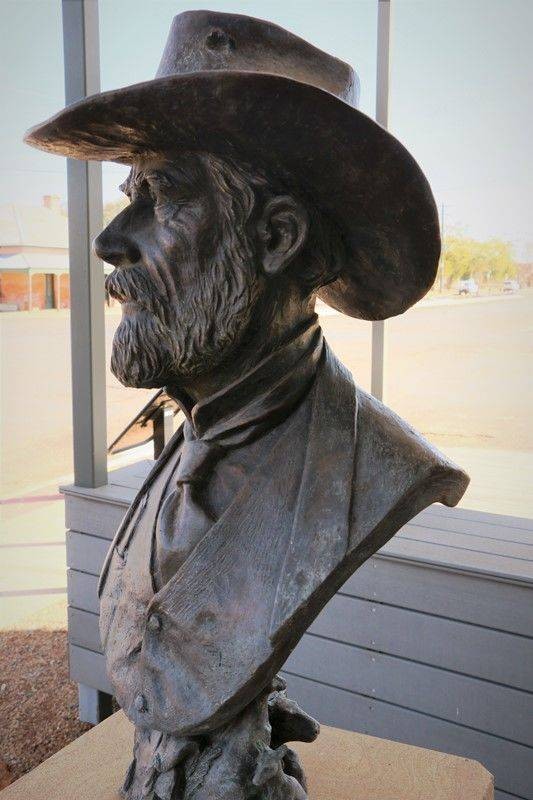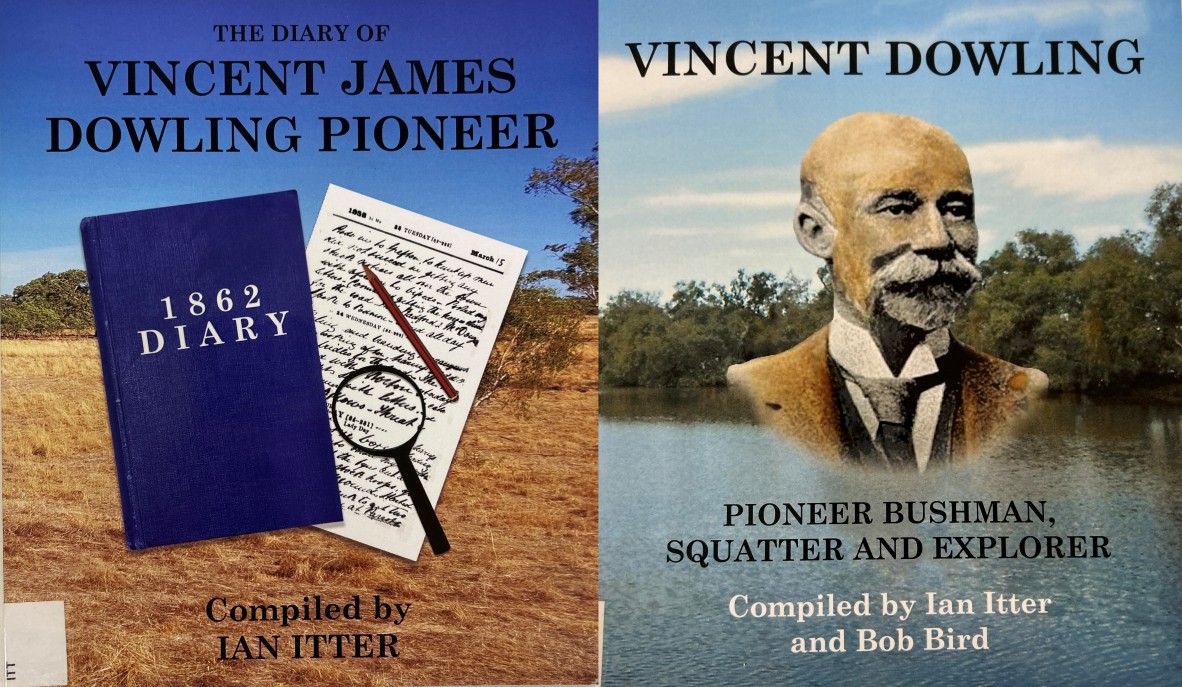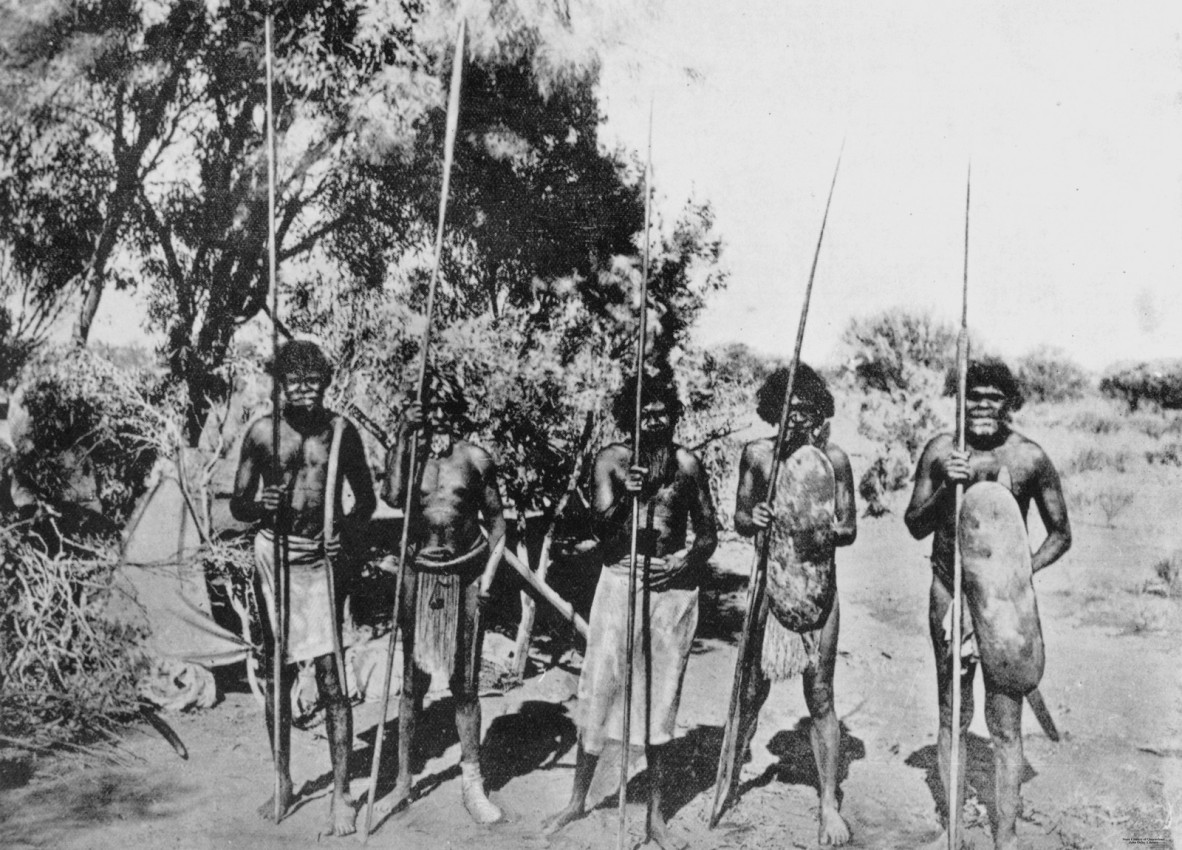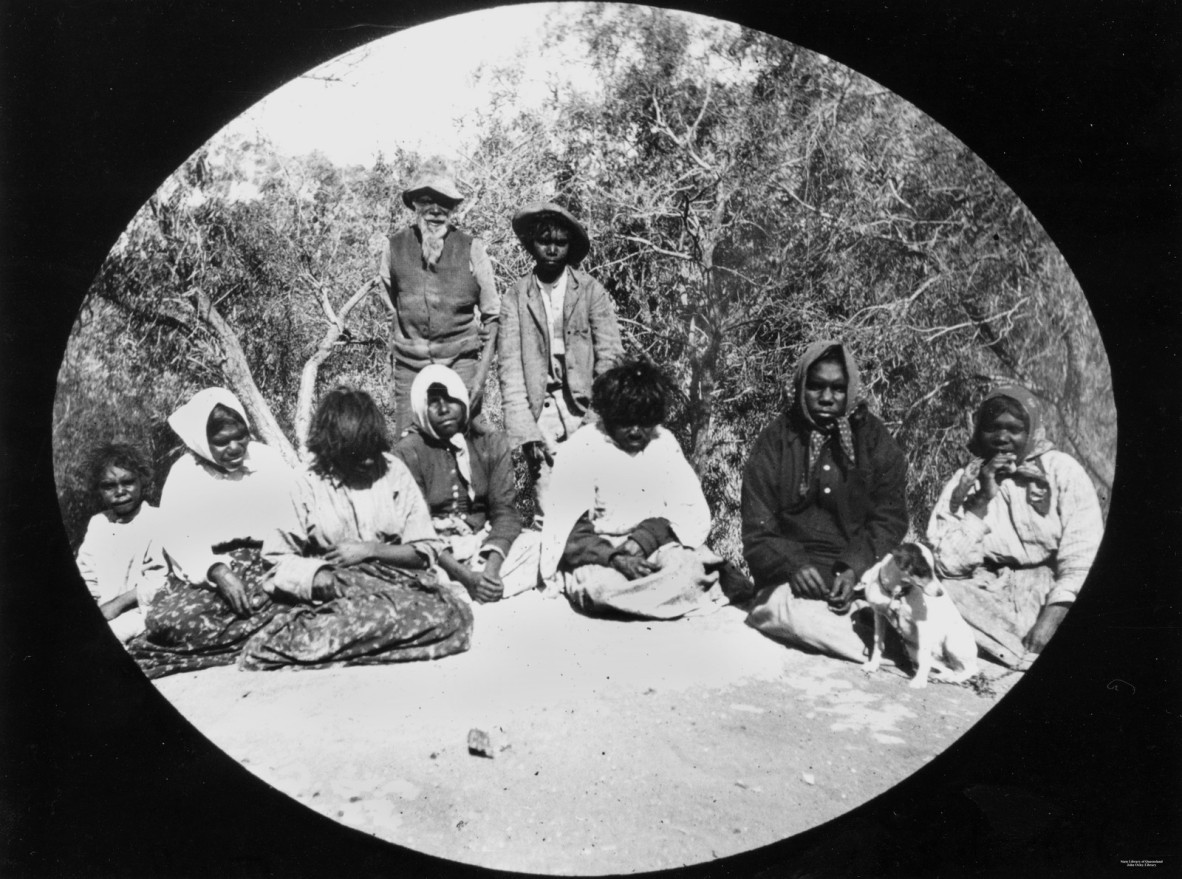The Man with a Hole in His Hat
By Dr Max Brierty - 2022 Monica Clare Research Fellow | 9 June 2023
Guest blogger: Dr Max Brierty - 2022 Monica Clare Research Fellow. Project: Mipa Mipumani: The Colonisation of Kullilli Country in South-West Queensland.
In the town of Thargomindah, about a thousand kilometers west of Brisbane, there is a bronze monument to a fella named Vincent James Dowling. The plaque beneath him describes him as an ‘explorer and pastoralist’ with an ‘uncanny’ ability to navigate the country without getting lost. Dowling is regarded as the first European to ‘settle’ in the area, setting up a cattle station along the Bulloo River in the 1860s.
This is Kullilli country.

An image of the bronze sculpture of Vincent James Dowling, created by the artist William Eicholtz in 2011.. Photo courtesy Monument Australia.
Look a bit closer at the sculpture and you see that Dowling is wearing his ‘lucky’ cowboy hat, which had been pierced by a spear thrown by some Budjari mob, whose country is to the east of Kullilli, back in 1863. The colonial mythology surrounding Dowling has it that this was an unprovoked attack, but reading the entrance in his diary presents a murkier image. Perhaps the Budjari were themselves pre-empting an attack, as Dowling was following their footprints at the time. We cannot know.

Diaries of Vincent James Dowling. John Oxley Library, State Library of Queensland.
I dreamt up this project Mipa Mipumani: The Colonisation fo Kullilli Country in South-West Queensland with the idea of trying to uncover the story of what happened there through the last half of the nineteenth century.
‘Mipa mipumani’ roughly translates to the ‘making things bad’ or ‘things turning bad’, but it was also a play on the idea of colonists like Vincent James Dowling also having their own kind of ‘dreaming’, a bad dreaming. This dreaming was not only of colonisation and fantasies of settlement and profit, but also the lengths they would go to in order to bring that about. So, not the kind of Dreaming that Aboriginal people hold for Country, but something else: the kind of dreams that colonists brought to life in places like Australia to cause all sorts of chaos and mischief. In effect, the colonial dreams of mipa mipumani.
Elsewhere, my friend Stephen Muecke and I have been exploring some of the ways this ‘whitefella dreaming’ has played out here in Australia. Of course, Captain Cook certainly fits into that category. But so does Dowling in his own way. That is especially the case when thinking about how whitefella dreams of colonisation and settlement played out on Kullilli country.
There are a number of oral histories among Aboriginal people and European Australians that Dowling led a massacre against the Kullilli people in 1865 after his brother James Dowling was supposedly killed by Pimpilly, an Aboriginal man he employed as a guide. One of those accounts includes E. O. Hobkirk, who said he joined Dowling in conducting the massacre as well. Other accounts talk of Dowling requesting the Queensland Native Police to the area to undertake the massacre, just as so many hundreds of settlers did across Queensland through the nineteenth century.

Group of men with spears and shields, standing in front of a shelter in the Thargomindah District, ca.1890. Members of the Yanko Tribe, Queensland. John Oxley Library, State Library of Queensland. Neg 51656.

Aboriginal group at Bulloo Downs Station, 1896. John Oxley Library, State Library of Queensland. Neg 59535.
Finding some way to bring new insights to the events surrounding this massacre remains one of the key drivers for me in this project. But the diaries of the man with a hole in his hat have so far only left cryptic clues about what happened, hiding much more than they show. Take a letter that he wrote to his mother informing her of James’ death, for instance, where he writes that Dowling has begun to seek revenge – not against Pimpilly, the man accused of killing him, but against the people, Kullilli people, who he blamed for helping him escape.
While I am still searching for answers, I also recognise that maybe some answers will not arrive. What comes out of this project Mipa Mipumani might not be like a traditional history in that sense. Maybe it will not be about arranging facts and figures out in a chronological order, and instead be about developing a more meaningful relationship to the past and how that past has carried through to the present in so many ways.
Dr Max Brierty
Other blogs:
- Read other blogs by Dr Max Brierty
- Read other blogs about Queenslan's First Nations history by past Monica Clare Research Fellows.
Dr Max Brierty's Research Reveals talk.
Comments
Your email address will not be published.
We welcome relevant, respectful comments.